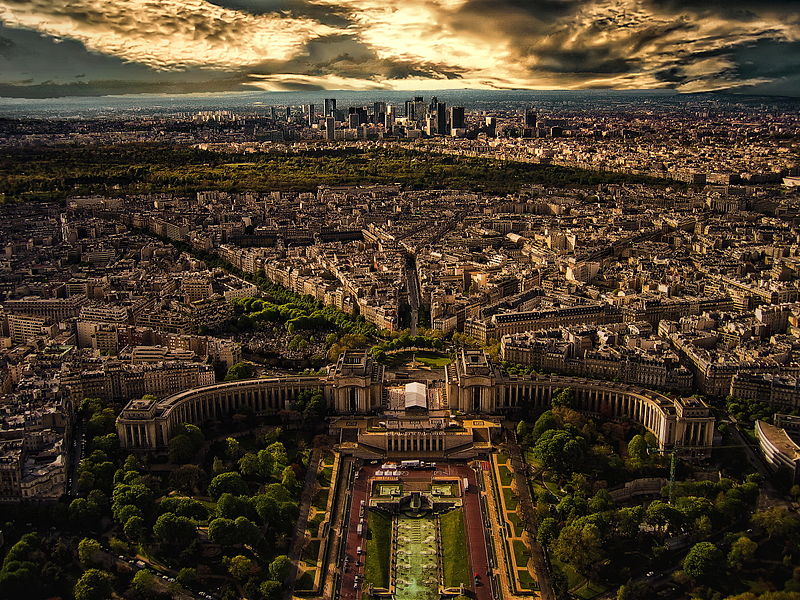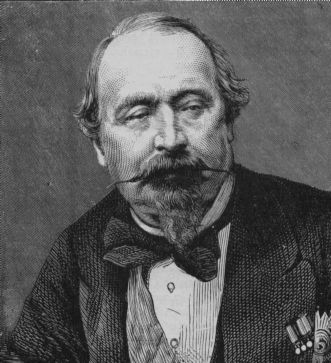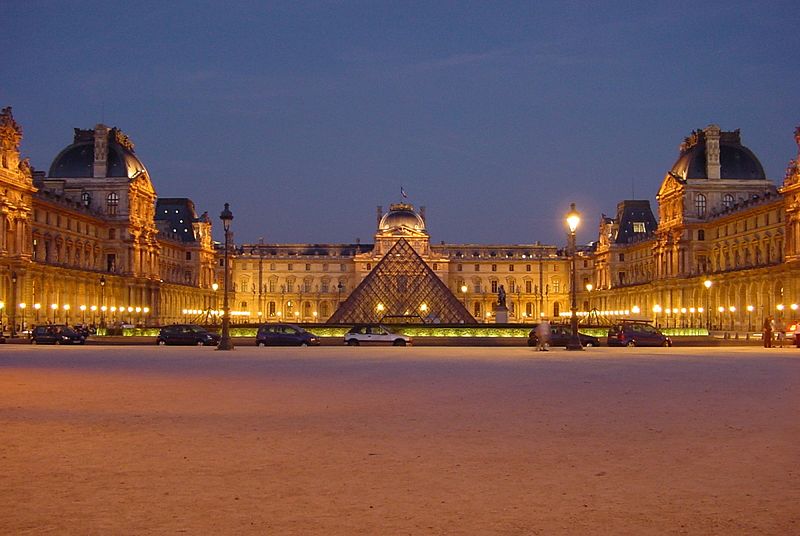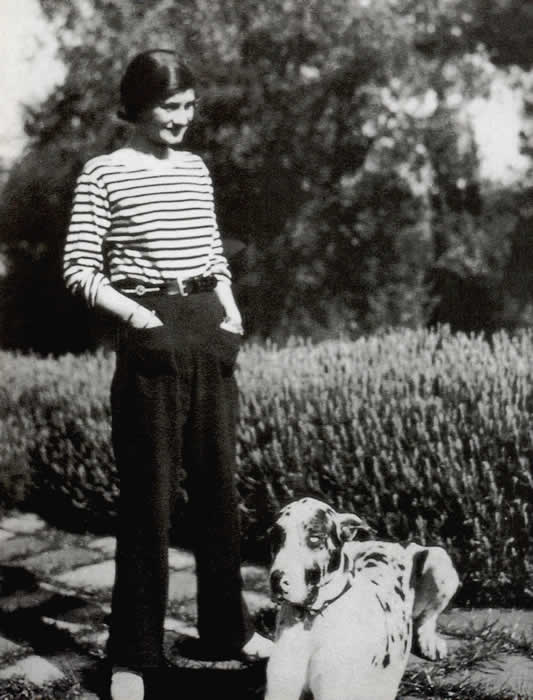



 by
by 
Paris. The famous city of passionate love—or maybe the city of cliché. Why is Paris, the capital of France, so popular? It seems that everyone who remotely has their sights set on vacationing to Europe MUST visit Paris, no questions or qualms. Here are a few reasons why I think Paris is so compelling and charming to many different people; the contrasting social history, the world-class museums, the Eifel Tower, and Paris as seen through the media’s eyes has all contributed to its handsome fame.
The history of Paris alone is enough to lure people of all cultures to its gates. The actual city originated with the Parisii tribe, a “barbaric” people from Gaul who settled near the Seine River. The region was renamed Lutetia by the Romans, but it formally became “Paris” in the 4th century. Gaul, now called France, was conquered by Julius Caesar during his Gallic Wars of the 1st century BCE. After his conquest, rebellions broke out sporadically among the tribes, but for the most part, it was integrated successfully into the Roman Empire. The first King of France, Clovis, ruled from 486-511 and founded the Merovingian Dynasty of France. 73 kings later, the official French Monarchy ended with Napoleon III (nephew of the Napoleon I), who ruled from 1852-1870. I believe the French Revolution attracts many travelers to Paris—imagine having kings for centuries and then the peasant’s revolt and form their own government (1789). The stark contrast between monarchy one minute and near anarchy the next is stunning; although Maximilian Robespierre, head of the Committee of Public Safety during the Revolution, started out with good intentions, he ended up dousing Paris in a bloodbath that would eventually induce the Monarchs of France to reign supreme again. Bastille Day (July 14th), the infamous use of the guillotine, and sumptuous of Versailles all attract people to Paris; the mood of a city comes in part from the richness of its history, and Paris could write volumes on its social changes (not including WWII).
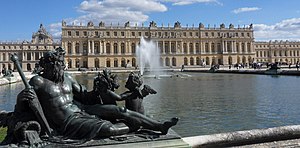
Palace of Versailles
http://en.wikipedia.org/wiki/Palace_of_Versailles
Next, Paris has a wealth of museums that entice art lovers from all over the world, not just Europe. Although the Louvre immediately comes to mind, Paris was the major scene of contemporary art in the early 20th century. Fauvism, Surrealism, Dada, Cubism, Post-Impressionism—all of them were bred in the artistically and intellectually conducive environment of the City of Lights. Famous French Modern artists include Marcel Duchamp, Andre Derain, Georges Braque, and Max Ernst. The Centre Pompidou, the premier contemporary modern art exhibition hall in Paris, designed by Piano and Rogers, is a quirky, unique place where street actors and artists often perform in front of the high-tech building. The design of the edifice looks absurd on the outside—all the piping, air condition vents, electrical circuits, cooling ducts, and elevators are color coded and displayed on the industrial exterior. Paris has also long been home to artists; whether they live permanently in Paris or just swing by to hang with the Avant-Garde and see the new trends, artists flock to the Mecca of art (New York City as well). Other Museums in Paris include Musée d’Orsay, Rodin Museum, and Petit Palais. Although the Louvre is the only museum I have been to in France, descending into the transparent glass pyramid was an experience I will never forget.
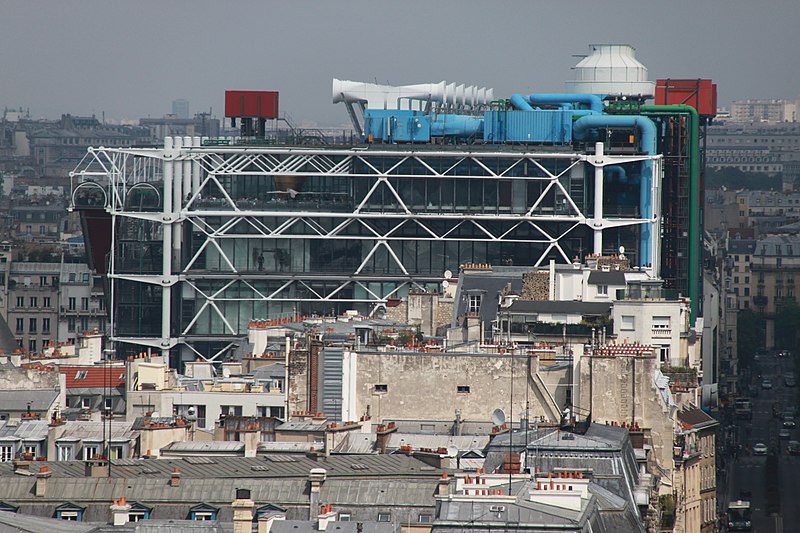
Centre Pompidou
Louvre Pyramid
It is impossible to mention Paris and not discuss the Eiffel Tower, the icon of Paris that was constructed by Gustav Eiffel’s company in 1887. The finished product was displayed at the 1889 World’s Fair exhibition in Paris and is made of pure iron (not steel as many people assume). The prefabricated structure and message of this Tower (new machinery, modernity) is similar to Joseph Paxton’s Crystal Palace in England, which showed new technology and the enclosure/control over nature. The image of the Tower is so hackneyed because it is stamped on cheap t-shirts, made into non-biodegradable plastic figurines, and used in everyday language to refer to Paris. The field underneath, the Champ de Mars, is known for being the lush, green blanket that lies coolly underneath the modern structure. The Tower receives 7 million visitors a year, making it 35th the most visited monument in the world (behind the Louvre with 8.5 million visitors a year). It has been featured in countless movies, books, and plays; it is generally romanticized into an edifice of love /charm and a timeless classic. Skim the articles here for the number of time the Eiffel Tower has been in the background or the one of the main setting elements of movies. I have visited the Tower as well, and the view from the second deck (the third was closed on the day I went) was stunning and panoramic.
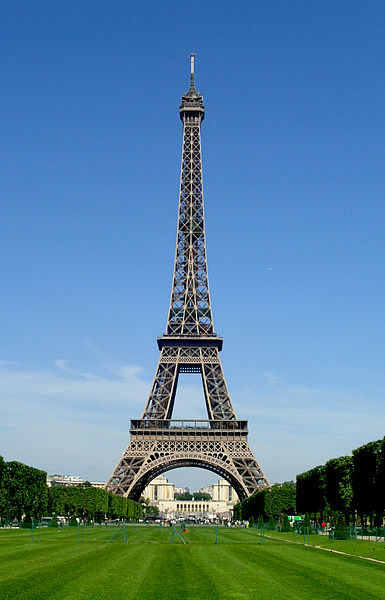
Yes, the wine and food are excellent in Paris and the tourist attractions are endless, but Paris is also one of the world capitals of fashion. Paris fashion week, usually held during each season, attracts luxurious, high end designers with cutting edge trends and styles. Famous French fashion designers include Hermès, Christian Dior, Yves Saint Laurent, Louis Vuitton, and Coco Chanel. Their names, omnipresent in fashion as well as everyday vocabulary, have transformed the world of design into a popular and well regarded profession. French fashion became particularly well known during the reign of King Louis XIV, or the “Sun King.” The licentious ballet builder of Versailles, Louis was famous for his curly wig, dainty legs, and the ritualistic, aristocratic lifestyle at Versailles (formerly a hunting lodge). Paris gradually evolved into the center of “Haute Couture,” and the present day Avenue des Champs-Élysée has luxury clothing, makeup, and shoe stores; it is akin to the fancy street leading up the Spanish Steps in Rome and Times Square in New York City. Finally, Coco Chanel, the fashion designer born in 1883, created more wearable and comfortable outfits for women—no more confining corsets! Along with her signature perfume, the adage of “the little black dress,” and her rivalry with fellow designer Elsa Schiaparelli (who also collaborated with Dali and other surrealists), Chanel was allegedly a Nazi sympathizer. However, she is famous for her inspiring/feminist quotes such as, “A girl should be two things: classy and fabulous.”
Coco Chanel
To conclude, Paris still fascinates me just as it does any seasoned traveler. The food, culture, museums, landmarks, and appearance in pop culture propels it the list of most visited cities in the world (#2 in Europe). Although the Parisian people have the reputation of being snooty, I am willing to overlook that because their environment, history, and possession of the Venus de Milo in the Louvre compel me to do so.
Sources:
